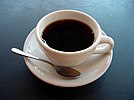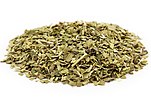History:
– First use of essential oils in 10th or 11th century by Avicenna
– Tea dates back to 10th century BC
– Infusion is distinct from decoction and percolation
– Avicenna possibly mentioned infusion in The Canon of Medicine
Preparation techniques:
– Infusion uses botanicals like dried herbs, flowers, or berries
– Liquid is boiled and poured over herb for steeping
– Infusion time varies from seconds to months
– Accessories for removing botanicals include metal steepers and tea infusers
– Teabags are commonly used for infusions
Examples:
– Tea is a common infusion, prepared by steeping leaves in hot water
– Coffee can be made through infusion or percolation
– Herbal remedies are often produced through infusions
– Flavored oils are made by steeping plants in edible oil or vinegar
– Cucumber water, a popular infusion, is often served in spas
See also:
– Mate
– Aromatherapy
– Chinese herbology
– Decoction
– Herbalism
References:
– Hamlin, Suzanne (8 October 1997). Sips; In California, the Water May Taste Like a Cucumber. The New York Times
External links:
– Wikimedia Commons has media related to Infusions.
This article includes a list of general references, but it lacks sufficient corresponding inline citations. (July 2011) |
Infusion is the process of extracting chemical compounds or flavors from plant material in a solvent such as water, oil or alcohol, by allowing the material to remain suspended in the solvent over time (a process often called steeping). An infusion is also the name for the resultant liquid. The process of infusion is distinct from both decoction—a method of extraction involving boiling the plant material—and percolation, in which water is passed through the material (as in a coffeemaker).






